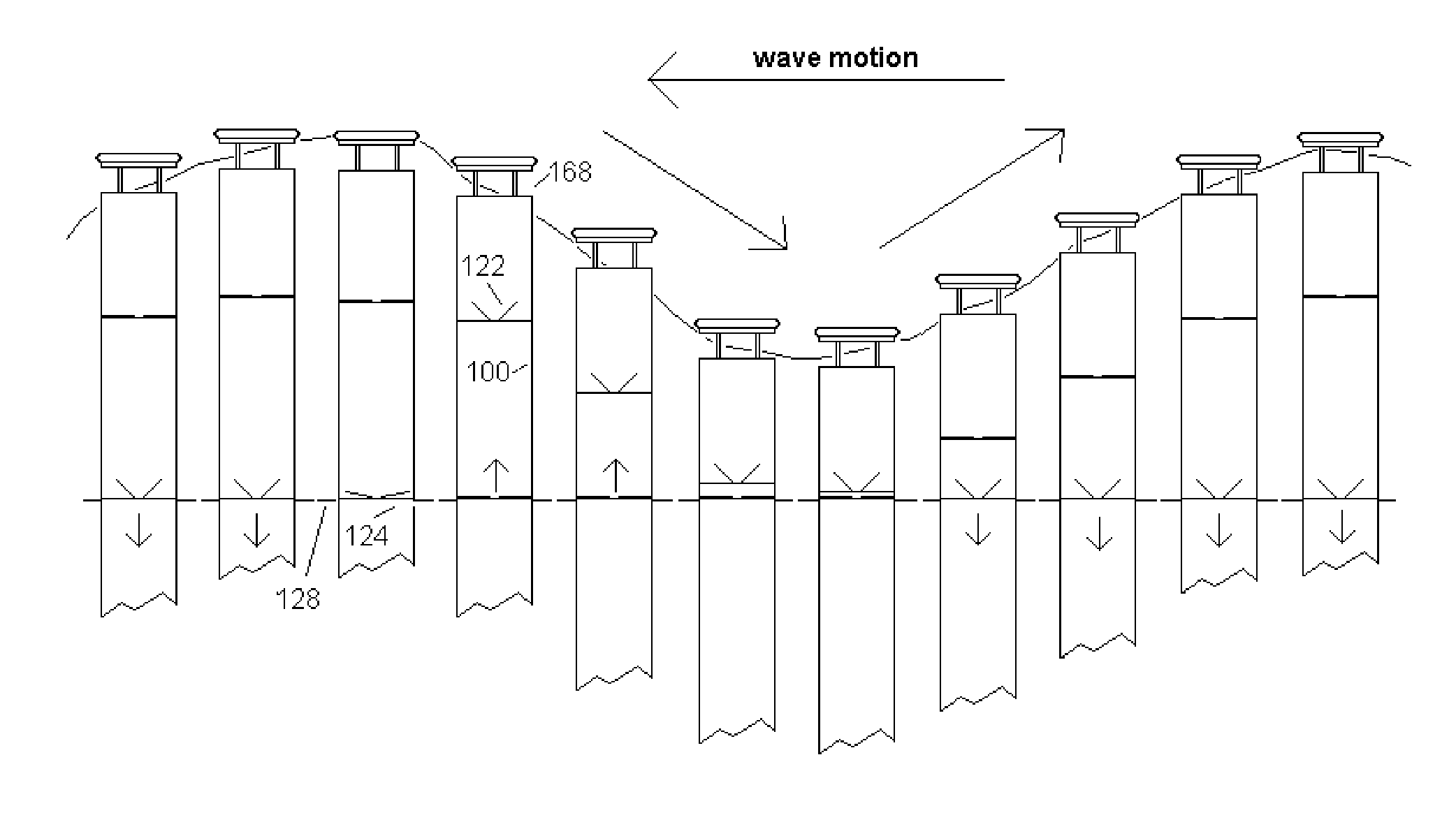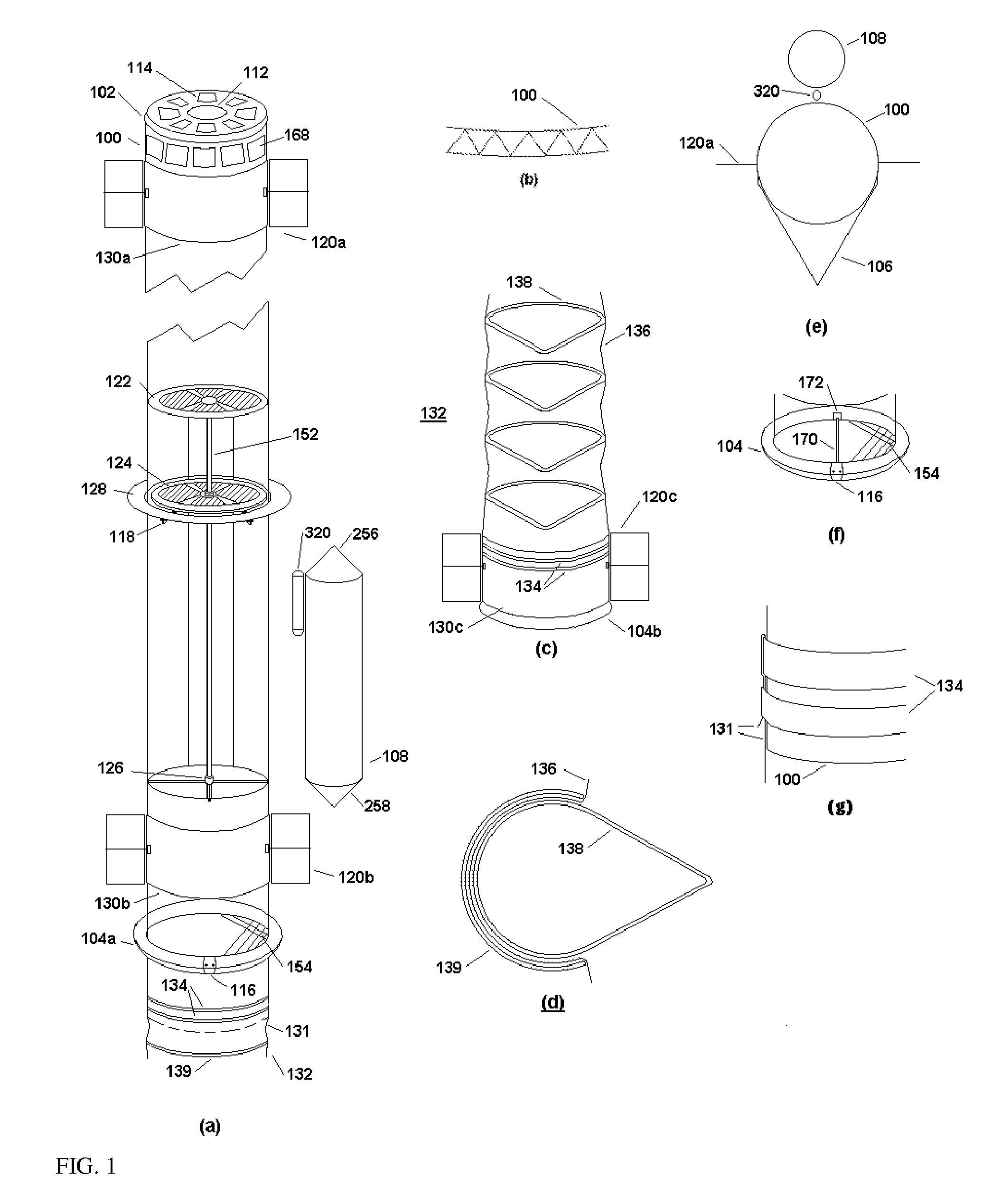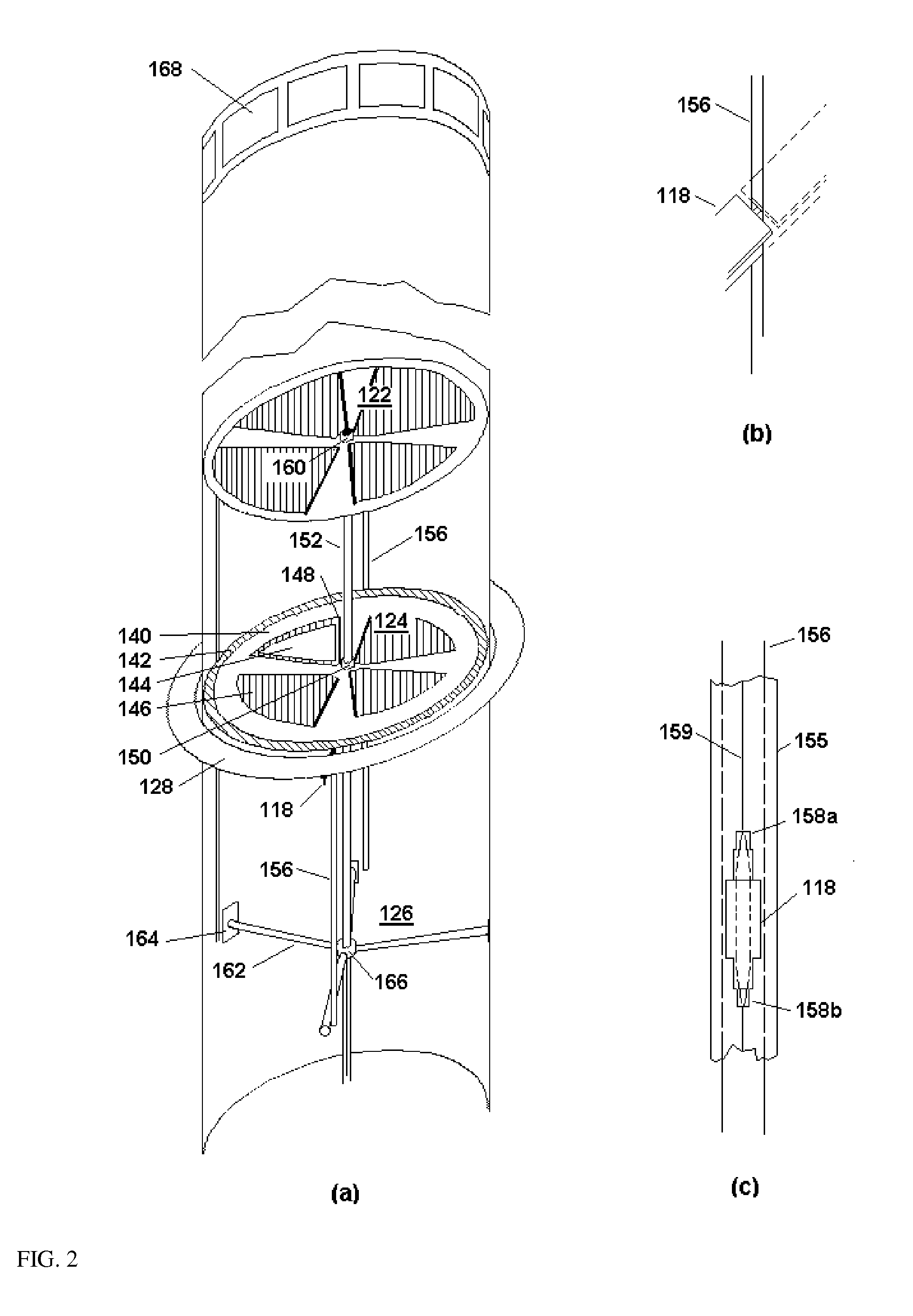Apparatus and method for inhibiting the formation of tropical cyclones
a technology of tropical cyclones and apparatus, applied in the field of tropical cyclones, can solve the problems of affecting the stability of the environment, affecting the effect of the environment, and affecting the effect of the effect of the environmen
- Summary
- Abstract
- Description
- Claims
- Application Information
AI Technical Summary
Benefits of technology
Problems solved by technology
Method used
Image
Examples
Embodiment Construction
Preferred Embodiment—FIGS. 1, 2, 4 and 5
[0041]A preferred embodiment of the current invention is shown in FIG. 1a. The components of this apparatus are ruggedly constructed from materials highly resistant to seawater corrosion. Components near the ocean surface are constructed from materials that are also resistant to ultraviolet radiation. All components should be able to survive repetitive and constant pressures of at least three to five atmospheres. Commercially available components and materials will allow the apparatus to operate substantially trouble-free for a period of at least five years without maintenance. Most surfaces that are exposed to seawater are sprayed or otherwise coated with an ablative-type, anti-fouling coating, which can give protection against marine growth for up to eight years.
[0042]A large plurality of apparatuses operates together as a fleet of apparatuses, with a master apparatus exercising remote control over other apparatuses in its fleet. One or more...
PUM
 Login to View More
Login to View More Abstract
Description
Claims
Application Information
 Login to View More
Login to View More - R&D
- Intellectual Property
- Life Sciences
- Materials
- Tech Scout
- Unparalleled Data Quality
- Higher Quality Content
- 60% Fewer Hallucinations
Browse by: Latest US Patents, China's latest patents, Technical Efficacy Thesaurus, Application Domain, Technology Topic, Popular Technical Reports.
© 2025 PatSnap. All rights reserved.Legal|Privacy policy|Modern Slavery Act Transparency Statement|Sitemap|About US| Contact US: help@patsnap.com



